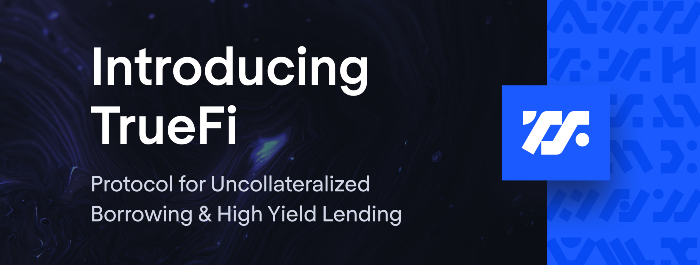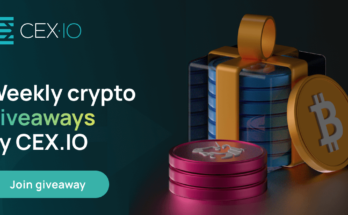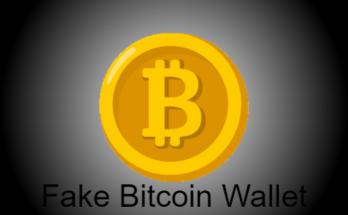Truefi Review: Is Truefi Safe Or Not? Is it a legit investment platform or scam? we will find out at the end of this post…
You’re welcome to Ccnworldtech Truefi Review. Meet TrueFi, the DeFi Protocol for Uncollateralized Lending.
What is Truefi

TrueFi is a DEfi that will allow vetted borrowers to request loans denominated in TUSD, just as in Biteris. TRU Stakers to assess the creditworthiness of the loans, and TUSD lenders to earn attractive APY on their stablecoins while also farming TRU.
TrueFi is actively following the path of progressive decentralization putting control in the hands of the community.
⇒Join us on Telegram for more Sure and Accurate football-winning tips every day...click here
Kindly check out our Truefi Coin (TRU) price prediction.
Uncollateralized lending provides an opportunity for lenders to earn long-term, competitive returns.
How Does Truefi Work?
The goal of TrueFi is to bring uncollateralized lending to DeFi. This helps cryptocurrency lenders enjoy attractive, sustainable rates of return while giving cryptocurrency borrowers predictable loan terms without requiring collateral.
Importantly, all lending and borrowing activity on TrueFi is fully transparent, allowing lenders to fully understand participating borrowers and flows of funds engaging with TrueFi.
How TrueFi Functions Today
- Lenders (like you) add TrueUSD into a TrueFi pool to be used for lending, earning interest, and farming TRU. Any unused capital is sent into the Curve protocol to maximize earnings.
- Borrowers (like OTC desks, exchanges, and other protocols) submit proposals to borrow capital from the pool. They submit the amount of capital they want, the % APY they’re offering, the term, and the Ethereum address that will receive the loan capital if the proposal is approved.
- Borrowers borrow funds from the TrueFi Pool by submitting requests subject to approval by TRU Staker’s vote on these proposals by staking their TRU on their choice of “Yes” or “No” for individual loans. Each vote exposes participating TRU holders to upside or downside based on if the loan ends up being successfully repaid, and so TRU Stakers are incentivized to vote carefully.
- The Pool smart contract approves or rejects the loan based on the Pool’s risk parameters and Yes/No votes by TRU Stakers.
- The Borrower must return the principal and interest on or before the term expired. Delinquent borrowers will face legal action pursuant to the loan agreement signed
In the future, Truefi also plans for TRU holders to be able to meaningfully direct the future development of the TrueFi platform by participating using TRU.
About Truefi
At TrustToken’s inception in 2017, our team envisioned a future in which traditional assets would move to the blockchain, taking advantage of the speed, cost savings, and borderless nature of decentralized protocols.
The thesis has played out in part: while global stablecoins commodities and some financial assets are increasingly moving on-chain, most real-world assets like real estate have struggled to find the infrastructure and demand necessary for a robust marketplace.
The explosion of DeFi introduced a new asset class with huge demand on the blockchain: debt.
As lending and borrowing grew at a breakneck pace, our work as a stablecoin provider gave us a front row seat watching DeFi yields rise and fall.
From supporting Bitcoin miners with stablecoins to providing leverage to trading desks, to the rise of yield farming, they watched centralized and decentralized lending platforms alike compete to find or build new ways of earning high, usually fleeting, yields — most prominently on USD-pegged stablecoins.
TrustToken Enters Uncollateralized Lending
Truefi looked to traditional financial markets for a vehicle that yields high returns, at consistent and predictable rates with manageable risk profiles and landed on uncollateralized lending. Moving the uncollateralized lending market onto the blockchain opens up access to lenders of nearly any size and background.
After years of building in crypto, we’ve found the most interesting products act as bridges between traditional and decentralized finance.
The TrustToken team has developed some unique strengths by developing and operating five top fiat-backed stablecoins serving over 100 countries, and with TrueFi, we’re bringing these to DeFi:
- A legal framework for enforcing action against delinquent loans compatible with DeFi, even without collateral;
- A longstanding, trusted reputation with retail and institutional users alike to bootstrap a base of high-quality borrowers and lenders, many of who are TUSD users with a proven track record as borrowers and lenders; and
- Global fiat-backed stablecoins that act as an easy on-ramp to TrueFi and beyond.



Truefi Review: Is Truefi Safe
Yes, Truefi is Safe.
The goal of TrueFi is to bring uncollateralized lending to DeFi. This helps cryptocurrency lenders enjoy attractive, sustainable rates of return while giving cryptocurrency borrowers predictable loan terms without requiring collateral.
Importantly, all lending and borrowing activity on TrueFi is fully transparent, allowing lenders to fully understand participating borrowers and flows of funds engaging with TrueFi.
TrueFi will be built on the concept of progressive decentralization. Initially, TrueFi development will focus on bootstrapping the protocol and distributing TRU to the community of users and developers who participate in the protocol.
Truefi DEfi Features
- Lenders (like you) add TrueUSD into a TrueFi pool to be used for lending, earning interest, and farming TRU. Any unused capital is sent into the Curve protocol to maximize earnings.
- Borrowers (like OTC desks, exchanges, and other protocols) submit proposals to borrow capital from the pool. They submit the amount of capital they want, the % APY they’re offering, the term, and the Ethereum address that will receive the loan capital if the proposal is approved.
- Borrowers borrow funds from the TrueFi Pool by submitting requests subject to approval by TRU Staker’s vote on these proposals by staking their TRU on their choice of “Yes” or “No” for individual loans. Each vote exposes participating TRU holders to upside or downside based on if the loan ends up being successfully repaid, and so TRU Stakers are incentivized to vote carefully.
- The Pool smart contract approves or rejects the loan based on the Pool’s risk parameters and Yes/No votes by TRU Stakers.
- The Borrower must return the principal and interest on or before the term expired. Delinquent borrowers will face legal action pursuant to the loan agreement signed
In the future, we also plan for TRU holders to be able to meaningfully direct the future development of the TrueFi platform by participating using TRU.
Risks of TrueFi & Uncollateralized Lending
While borrowers are usually willing to pay higher rates for uncollateralized loans, these higher yields do not come without risks. Compared with collateralized lending, uncollateralized lending has two major risks:
- Potentially increased risk of loss: Protocols that require collateral are protected by that collateral in case of default. While this allows such platforms to be indiscriminate in approving loans, uncollateralized loans come with a much higher standard of trust that must be met by a borrower. In case of default on an uncollateralized loan, a delinquent borrower will have been assessed for creditworthiness before the loan was made and will face both reputational damage and legal action. If such legal action is unsuccessful in collecting on the loan, lenders may lose a portion or the full value of the loan.
- Potentially lower liquidity: While instant withdrawals are becoming a norm for new protocols, uncollateralized lending may not offer the same flexibility. Most borrowers for uncollateralized loans are interested in fixed-rate, fixed-term loans for predictable repayment. This means lenders who fund such loans need to be comfortable locking up their assets for the duration of the loan, which can last weeks or months. TrueFi offers an alternative to instant withdrawals: the ability to sell your claim to the set of outstanding loans in the form of Pool Tokens. Lenders who choose to liquidate their loans this way should understand they may take a loss on the sale of their Pool Tokens, as these prices will be set by the market.
The Future of TrueFi
TrueFi’s goal is to become the ultimate protocol for uncollateralized lending.
To get there, TrueFi must advance in four key ways:
- Expand the set of borrowers
- Expand the types of loans
- Improve the efficiency of the Credit Prediction Market
- Progressively decentralize, to put these types of decisions into the hands of TrueFi users
With these improvements, we see a future in which capital moves at an order of magnitude greater efficiency than it does today. In a truly efficient market, a pre-approved borrower can take out a $5 million loan, return it within 30 minutes, and see the same funds immediately borrowed by another borrower.
This flow would be powered by a prediction market assessing the likelihood of default of every individual borrower 24/7, pricing in every new piece of available information.
In this future, every dollar of capital is instantly allocated to wherever it gets the best risk-adjusted return. We see TrueFi playing a key role in moving finance in this direction, and we’re excited to have you be a part of it.
Final Verdict
In the long term, TrueFi aims to become a market-driven, automated credit rating and lending system.
This will demand building beyond the rigid, conservative constraints such as minimum/maximum APY and high TRU participation factor.
It will also require increased levels of responsibility from users, especially for onboarding new borrowers beyond the pre-approved whitelist and approving new loan types.




